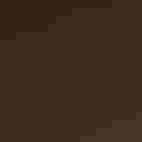Aplomado Falcon
At a Glance
This trim, elegant falcon once nested in desert grassland of the southwest, but it has been very rare north of the Mexican border since the 1920s or before. Recently a few have reappeared in New Mexico and western Texas, and there has been a major attempt to reintroduce the species in southern Texas.
All bird guide text and rangemaps adapted from Lives of North American Birds by Kenn Kaufman© 1996, used by permission of Houghton Mifflin Harcourt Publishing Company. All rights reserved.
Category
Falcons, Hawk-like Birds
IUCN Status
Least Concern
Habitat
Desert and Arid Habitats, Fields, Meadows, and Grasslands, Freshwater Wetlands, Shrublands, Savannas, and Thickets
Region
Southwest, Texas
Behavior
Direct Flight, Rapid Wingbeats, Soaring
Population
200.000
Range & Identification
Description
15-18" (38-45.5 cm). W. 40-48 (102-122 cm). Black side patches almost meet on lower breast; belly and thighs rufous. Long blackish tail has narrow white bars. Juvenile is browner. Juvenile Prairie Falcon sometimes shows extensive black side patches, but lacks rufous thighs and white trailing edge on inner part of wing. Juvenile Swainson's Hawk also can look surprisingly similar to Aplomado.
Size
About the size of a Crow, About the size of a Mallard or Herring Gull
Color
Black, Blue, Gray, Red, Tan, White, Yellow
Wing Shape
Long, Pointed, Tapered
Tail Shape
Long, Rounded, Square-tipped
Songs and Calls
A rapid kak-kak-kak-kak.
Call Pattern
Falling, Flat, Rising, Simple
Call Type
Scream
Sign up for Audubon's newsletter to learn more about birds like the Aplomado Falcon
Conservation
Conservation Status
Climate Threats Facing the Aplomado Falcon
Choose a temperature scenario below to see which threats will affect this species as warming increases. The same climate change-driven threats that put birds at risk will affect other wildlife and people, too.







